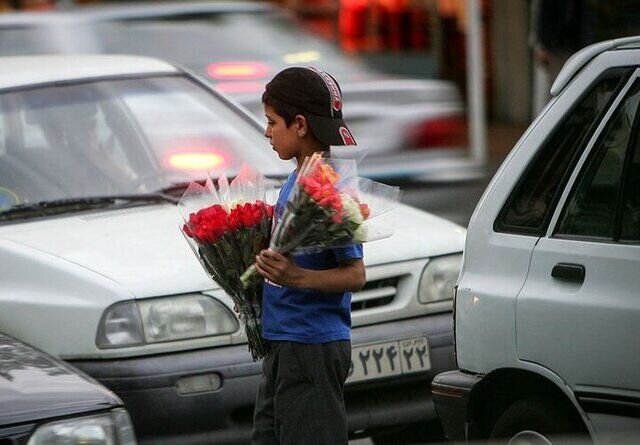Efforts taken to eliminate child labor

TEHRAN –Ten months into the establishment of the child labor working group, great strides have been taken to end child labor in the country.
Currently, hundreds of millions of girls and boys are engaged in child labor and are deprived of proper education, health, recreation, and basic freedoms.
“According to the statistics of the child labor working group, a total of 2,600 labor children have been identified and organized throughout the country. Foreign nationals make up a large part of the organized street-working children, while those unauthorized would be sent back to their country,” ISNA quoted Ali Rezaei, an official with the child labor working group, as saying.
He made the remarks on the occasion of World Day Against Child Labor, observed annually on June 12.
The official theme for World Day Against Child Labor 2024 is “Let’s act on our commitments: End Child Labor!”.
Referring to the measures taken by the working group in the past 10 months, Rezaei said, "The working group was established at the beginning of the fall last year under the order of the Leader Ayatollah Seyed Ali Khamenei to form the social council.
The working group aims to organize children in child labor to eliminate child labor.
According to Rezaei, the main goal of the working group is to reunite the child with the family to ensure they have access to their basic rights including education, health, and skill-building opportunities through providing free counseling services.
According to Article 79 of the Iranian Labor Law, employment of children under 15 years of age is prohibited, and if an employer hires individuals under 15 years of age, they are considered violators of the law and are subject to penalties ranging from fines to imprisonment, closure of the factory and revocation of the working permit.
The official went on to elaborate on the other objectives of the working group.
One of the main goals focuses on increasing coordination between different institutions to identify and organize street-working children to keep them away from harm.
Over the past ten months, the working group paid 40 visits to 26 provinces of the country, and a child labor committee has been established in 26 provinces of the country to organize street-working children based on the conditions of each province.
The other goal is to educate street-working children in technical and vocational schools, the official added.
The aim is to develop skill-building programs that empower the target children and create stable employment opportunities for them across the country. So far, 3,000 people have trained street-working children and empowered them.
Prevalence of child labor
Since 2000, for nearly two decades, the world has been making steady progress in reducing child labor.
But over the past few years, conflicts, crises, and the COVID-19 pandemic have plunged more families into poverty – and forced millions more children into child labor.
Economic growth has not been sufficient, nor inclusive enough, to relieve the pressure that too many families and communities feel and that makes them resort to child labor.
Africa ranks highest among regions both in the percentage of children in child labor — one-fifth — and the absolute number of children in child labor — 72 million.
Asia-Pacific ranks second highest in both these measures — 7 percent of all children and 62 million in absolute terms are in child labor in this region.
Africa, Asia, and the Pacific regions together account for almost nine out of every ten children in child labor worldwide. The remaining child labor population is divided among the Americas (11 million), Europe and Central Asia (6 million), and the Arab States (1 million). In terms of incidence, 5 percent of children are in child labor in the Americas, 4 percent in Europe and Central Asia, and 3 percent in the Arab States.
While the percentage of children in child labor is highest in low-income countries, their numbers are actually greater in middle-income countries. 9 percent of all children in lower-middle-income countries, and 7 percent of all children in upper-middle-income countries, are in child labor.
MT/MG
Leave a Comment